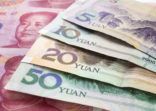Brian Kennedy, Loomis Sayles
“Investors sometimes associate bonds with less volatility, a more steady income stream and very little net asset value movement [compared to equities]. But you have to educate the investor base about what they are actually buying, because they are taking some risk and there is potential for a short-term period of underperformance,” Kennedy told FSA on a recent trip to Hong Kong.
Kennedy co-manages the Loomis Sayles Multisector Income Fund, which is a benchmark-unconstrained flexible bond fund that can invest across the global bond universe, including US investment grade corporates, non-US debt, emerging market debt, high yield bonds and convertibles. It can also allocate up to 20% of its assets to equities.
Although the fund has beaten its benchmark and sector over a three-year period, a recurring question that fund evaluators ask Kennedy is why the fund underperformed in 2015.
“In 2015, I don’t think we saw oil going from $100 to $25. I’m not sure anybody did,” he said, adding that the US dollar strengthened and investor sentiment turned to risk-off.
“People sold risk assets. People sold anything associated with commodities. The dollar got super strong, which hurt us on the non-dollar side.”
During that period, the fund had allocated 25% of its assets to non-US dollar-denominated bonds, according to its September 2015 fund factsheet. Investments in commodity-related companies also hurt the fund, Kennedy added.
However, the fund’s performance bounced back in the succeeding years. “For long-term investors, you are typically rewarded for buying or holding through those periods. So we are buying when things are down, not selling.”
He added that market sell-offs usually do not last long, but the 2015 period was prolonged at 18-20 months.
Stable payout preference
Another challenge that the firm faced when selling its products to distributors in the region is that Asian investors prefer to have a stable dividend payout, according to Samuel Lam, head of wholesale and retail fund distribution for Hong Kong at Natixis Investment Managers. Loomis Sayles is one of the Natixis IM’s affiliate firms.
Lam said that investors in the region have been used to receiving stable income from fixed income funds for the past four-to-five years.
“One of the key questions that we always get asked is if we have a smoothed-out [vs erratic] payout from the funds,” he said.
Previously, the fund did not have a share class that gave a stable dividend payout. However, the firm just launched an Australian-dollar share class that provides monthly distributions to investors.
“So we try to get closer to investors in Asia,” Lam said.
The fund is authorised to be sold in Singapore to all types of investors. In Hong Kong, it is only available to professional investors. The firm believes there is demand for the product. According to Lam, a large European bank in Hong Kong recently brought the fund onto its platform.
Avoiding interest rate risk
Rising interest rates in the US are the primary risk in 2018, Kennedy said.
In the US, he expects three more rate hikes this year and therefore prefers bonds that do not have a strong correlation to interest rates. These include high yield bonds, non-US dollar-denominated bonds and convertibles.
“They have specific types of risk that do not correlate all that well with interest rate risk in the US.”
The fund currently has around one-quarter of its assets in local currency bonds, Kennedy said. As of the end of 2017, the fund had nearly 30% of its assets in below investment-grade bonds, according to its fund factsheet.
Kennedy favours commodity bonds that are denominated in the currencies of Australia, New Zealand and Canada, as well as Mexico.
“We think those currencies can be competitive against the US dollar. As we see this global reflation take place, you could see continued bids for commodities, which should be good for commodity producers.”
The three-year performance of the Loomis Sayles Multisector Income fund versus its reference index:
















